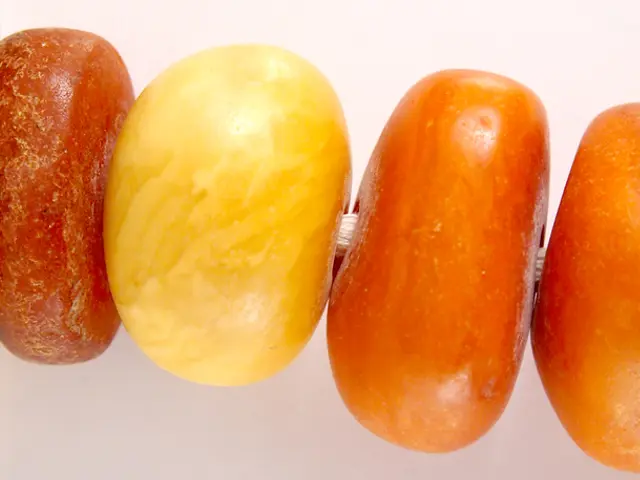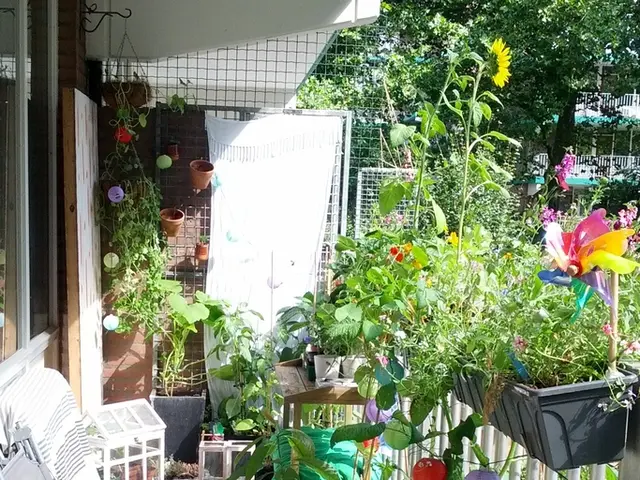Basil Over- vs Under-Watering: Recognizing and Resolving the Problem
In the world of gardening, basil is a popular herb that requires careful attention to thrive. With over 15 years of experience, gardening expert Glen shares his insights on watering basil to promote healthy growth.
Glen has recently delved into topics such as garden fungicides, candy cane peppers, and watermelon. However, when it comes to basil, he emphasises the importance of maintaining the right balance between underwatering and overwatering.
The optimal watering method for basil is to water deeply and thoroughly when the top inch (2.5 cm) of soil feels dry. This should ideally be done in the early morning to allow foliage to dry and minimise fungal risks. Water should be applied at the base of the plant, targeting the soil directly, rather than the leaves.
For potted basil, water slowly until excess drains from the bottom, ensuring the entire root system is hydrated. Basil planted in the ground requires less frequent but deeper watering to promote strong root growth. Using mulch like straw or wood chips around basil helps retain soil moisture and regulate temperature, reducing water stress.
Signs of overwatering basil include yellowing and pale leaves, brown spots on the leaves, wilting despite moist soil, soggy or constantly wet soil, which can lead to root rot and fungal diseases. On the other hand, signs of underwatering include drooping or wilting leaves with dry soil below the surface, leaves that may curl or become dry and crispy, and reduced growth and dull leaf color.
To prevent overwatering and root rot, basil benefits from well-draining soil and containers with drainage holes. Checking soil moisture by sticking a finger an inch deep can help prevent overwatering and root rot. Around one inch of water per week is a common aim for maintaining soil moisture.
In case of overwatering, stop watering, let the soil dry, prune damaged leaves, and consider repotting in fresh soil if necessary. Pruning damaged leaves encourages new growth in overwatered basil plants. The soil moisture level should be moist, not soaked, which can be checked using the finger-test method or a soil moisture meter.
Basil is a tricky plant to cultivate, and the right amount of water is crucial for its growth. By following Glen's tips, you can ensure your basil plants stay healthy and vibrant, adding a touch of flavour to your dishes.
Glen's expert advice delves into the proper watering methods for basil, a key element in both lifestyle and home-and-garden pursuits, such as gardening. He advocates for deep and thorough watering when the top inch of soil is dry, with the aim of maintaining a balance that avoids both underwatering and overwatering.




